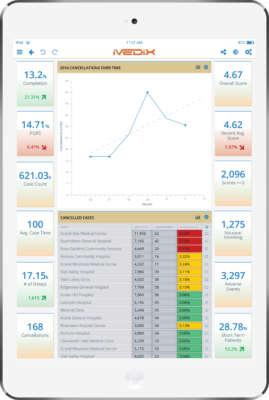Technology is Key to Meeting MACRA Requirements
 When it comes to technology, healthcare providers have been focusing primarily on the transition from paper-based medical record systems to certified electronic-based medical record systems (EMRs). The transition to EMRs is due in large part to the meaningful use clause of the Affordable Care Act. The Affordable Care Act isn’t the only legislation that healthcare providers should be concerned with. In 2015, Congress enacted the Medicare Access and CHIP Reauthorization Act (MACRA). HHS recently finalized the MACRA rule which aims to streamline the Medicare payment system and reward healthcare providers for quality patient care.
When it comes to technology, healthcare providers have been focusing primarily on the transition from paper-based medical record systems to certified electronic-based medical record systems (EMRs). The transition to EMRs is due in large part to the meaningful use clause of the Affordable Care Act. The Affordable Care Act isn’t the only legislation that healthcare providers should be concerned with. In 2015, Congress enacted the Medicare Access and CHIP Reauthorization Act (MACRA). HHS recently finalized the MACRA rule which aims to streamline the Medicare payment system and reward healthcare providers for quality patient care.
Many healthcare providers have benefitted from the adoption of EMRs. Data integration and analytics platforms like iVEDiX are even helping providers reimagine the EMR experience. iVEDiX integrates multiple EMRs and data sources into one easy-to-use interface that provides physicians and other healthcare providers the data they need when they need it; whether it’s patient data, billing data, or location-based public health data. Technology is playing a large part in the transformation of the healthcare industry, especially when it comes to meaningful use. Technology can help healthcare providers meet MACRA requirements and take advantage of incentive payment programs.
So, What is MACRA?
Like most healthcare bills, MACRA is a long bill with too much information to go over in a single blog post. The gist of the bill is that it specifies new ways for healthcare providers to be paid for patients who receive Medicare benefits, and initiates new data sharing programs and requirements. It should be noted that MACRA rules only apply to Medicare Part B payments. The rule gives healthcare providers two paths for Medicare payments; Alternative Payment Models (APMs) and Merit-Based Incentive Payment System (MIPS).
According to the official CMS website, APM “is a payment approach, developed in partnership with the clinician community, that provides added incentives to clinicians to provide high-quality and cost-efficient care. APMs can apply to a specific clinical condition, a care episode, or a population.” MACRA includes a Quality Payment Program that offers Advanced APMs, a subset of APMs. Advanced APMs allow healthcare providers to earn more if they take on some patient outcome-related risk. There are several Advanced APMs requirements including the use of certified EHR/EMR technology.
According to the Sa Ignite website, MIPS consolidates several programs and regulations such as Physician Quality Reporting System (PQRS), Value-Based Modifier (VBM), and Medicare Meaningful Use (MU) into one, MIPS program. MIPS also includes new requirements for healthcare providers related to improving patient outcomes. MIPS aims to simplify performance management and reporting as well as provide value-based incentives related to patient outcomes.
Technology is Key
The healthcare industry is starting to shift from fee-for-service payments models to care coordination models that bear some risk to healthcare providers. MACRA makes payments to providers based on patient outcomes. Improved patient outcomes and accurate reporting are a key part of meeting MACRA requirements and taking advantage of incentive payment programs. To accurately report patient outcomes to MIPS, providers need applications that analyze patient data and report on patient outcomes precisely. Most physician offices and hospitals have already incorporated certified EMR technology as part of their healthcare services workflows. EMRs along with data integration and analytics platforms like iVEDiX can help healthcare providers improve patient outcomes and accurately report on those outcomes; this in turn, helps healthcare providers meet MACRA requirements and earn more by taking advantage of incentive payment programs.




